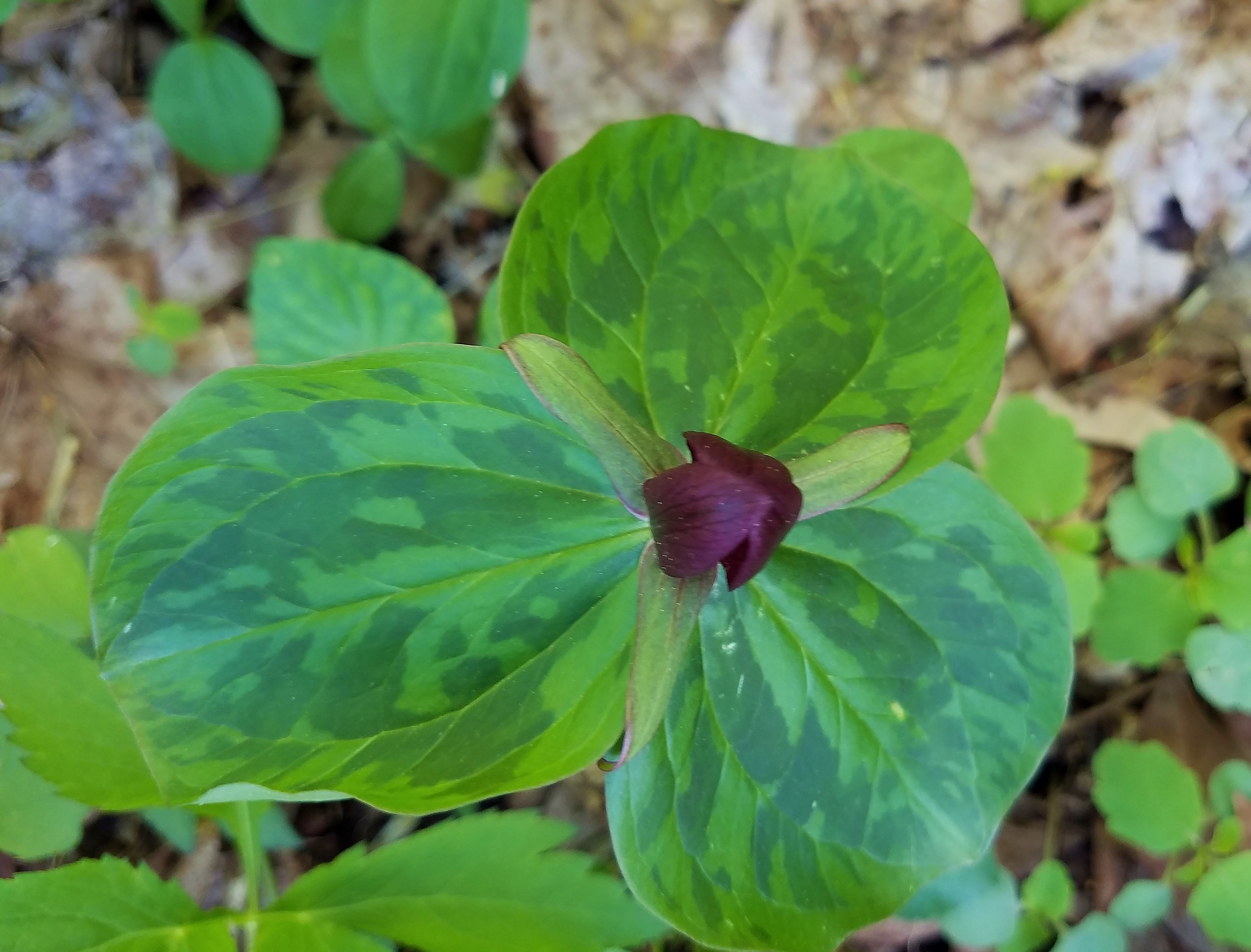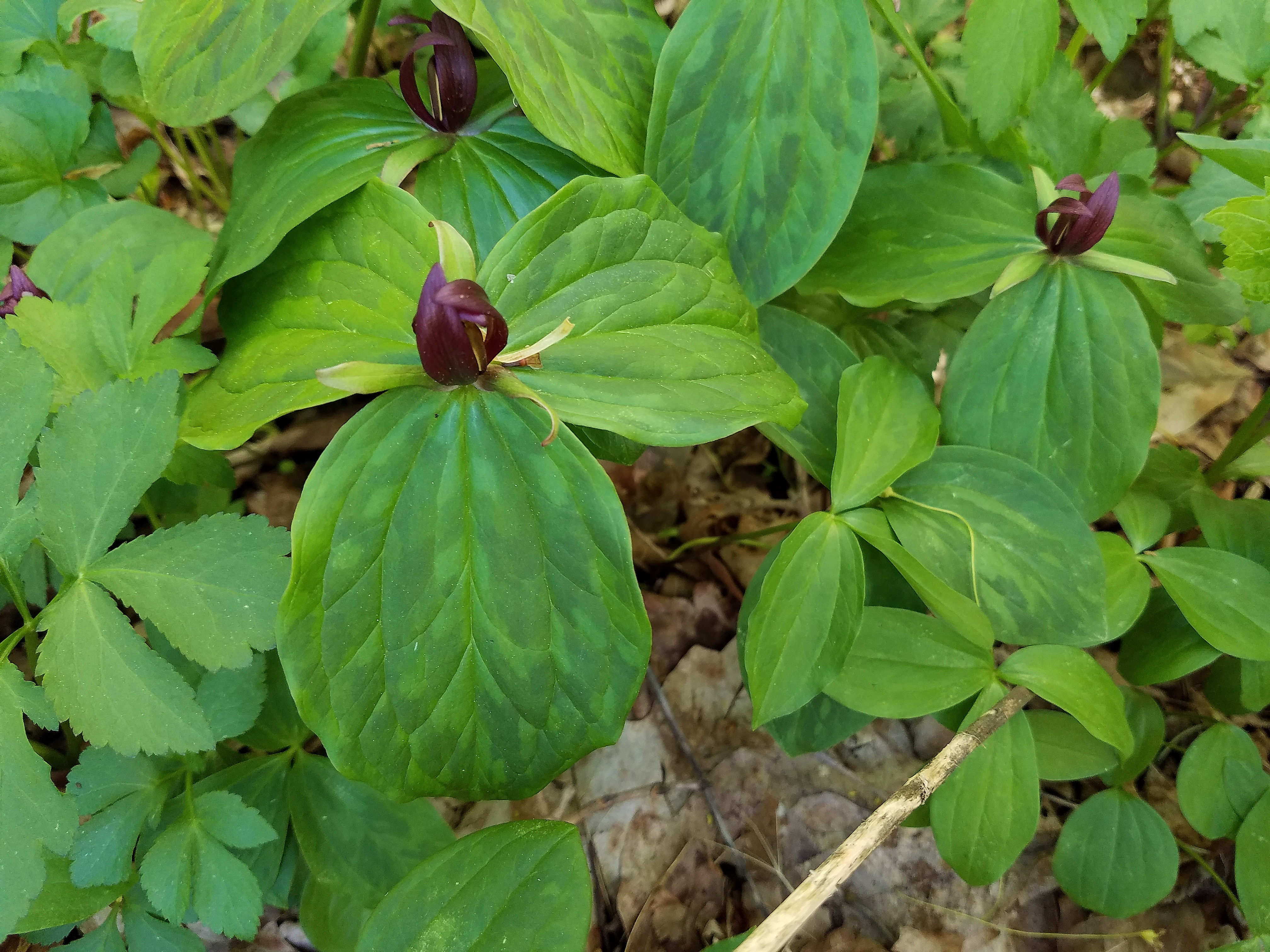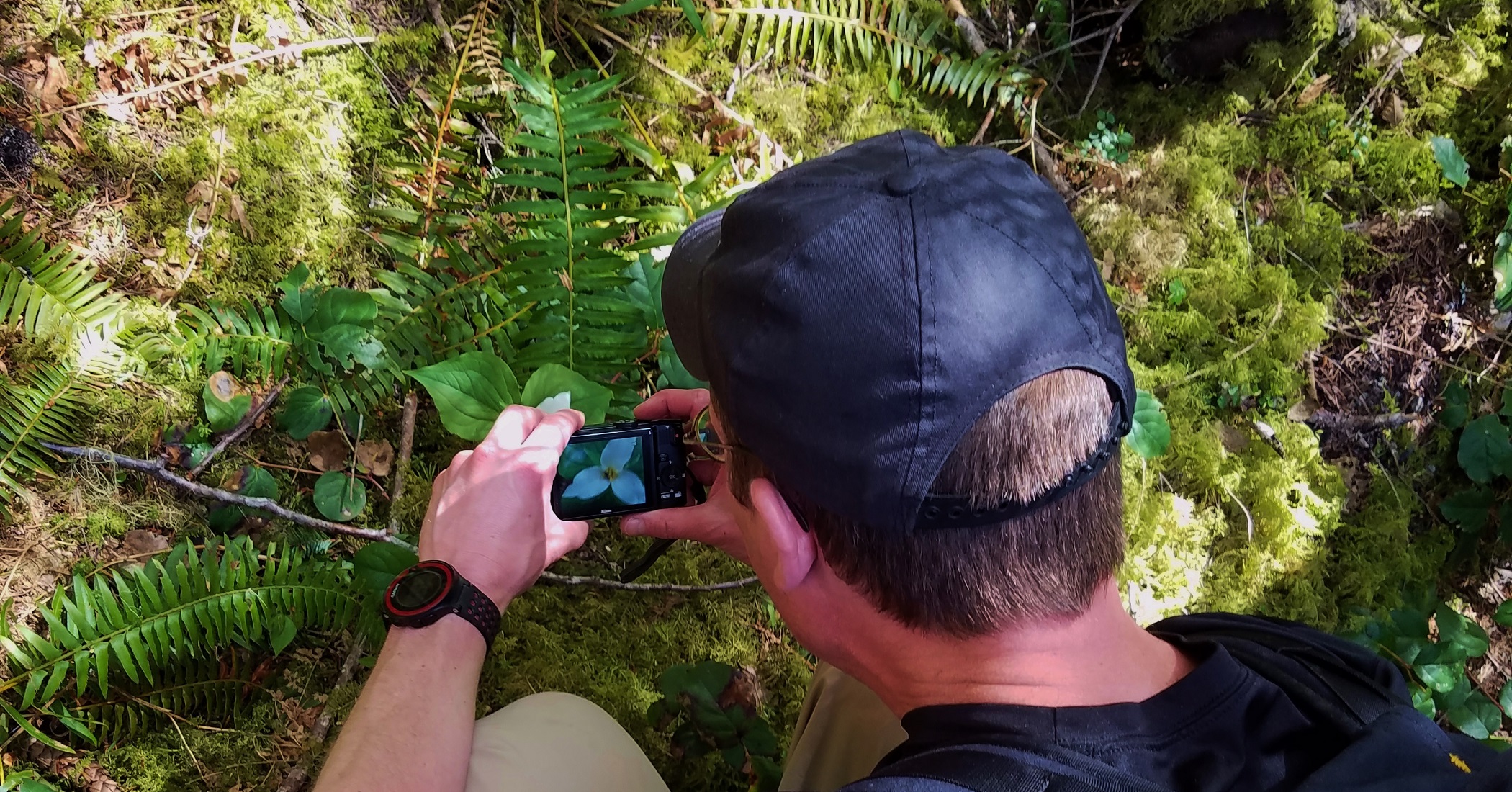Blog

#bioPGH Blog: Trillium Time
 A resource of Biophilia: Pittsburgh, #bioPGH is a weekly blog and social media series that aims to encourage both children and adults to reconnect with nature and enjoy what each of our distinctive seasons has to offer.
A resource of Biophilia: Pittsburgh, #bioPGH is a weekly blog and social media series that aims to encourage both children and adults to reconnect with nature and enjoy what each of our distinctive seasons has to offer.
One of the reasons I love to see huge, wizened trees is because I wonder what history those trees have seen—how has the world changed as they have aged? They remind my fantasy side of Tolkien’s elves and other ancient, long-lived races, keepers of history and mystical in their longevity. Though trees are the most obvious long-lived beings in our area, right now another timeworn plant is in bloom: the trillium. Trillium may not watch full centuries pass by, but if you have seen any trillium flowering this spring, it is possible that those plants are twenty, thirty, or even forty years old. Let’s check out this time-tempered perennial!
Here in Pennsylvania, we can see a few different species of trillium. Most commonly, we see the large flowered trillium (Trillium grandiflora), but we can also spy toadshade (Trillium sessile), red trillium (Trillium erectum), snow trillium (Trillium nivale), nodding trillium (Trillium cernuum), among a few rarer others. We are most familiar with seeing white flowers or the deep red-maroon of red trillium or toadshade, but trillium can also be shades of pinks and yellows, sometimes solid and sometimes streaked.


Toadshade at Boyce Mayview Park. The flowers look as though about they are about to bloom, but this is their completed bloom.
We may have a variety of species, but what unifies trillium is their fascinating life history. Trillium’s lifespan can be broken up into three stages: juvenile, non-reproductive, and reproductive. The length of each of these stages varies from individual plant to plant, but each stage can each last up to a decade or more. The stages are visibly identifiable by the plant’s structure. The juvenile stage can last 8-10 years, during which the plants form a single above-ground leaf. During the non-reproductive stage the plant grows its characteristic three leaves. However, the plant still does not flower, and it may not transition to the reproductive stage until it is anywhere from 15 – 30 years old. When the plant finally reaches this stage, it will flower and set seeds. Undisturbed, trillium in our area can live to be 30-40 years old, though out west, Pacific trillium have been recorded as old as 50!
If you’d like to see some of these wildflowers, trilliums are in bloom now, so be sure to check them out soon! Their blooms are adapted to their local environment and there can slight variation between even parks in the same region. One excellent place to visit is Raccoon Creek State Park’s wildflower reserve. Unlike most of Pennsylvania, the bedrock beneath the park is limestone, rather than the sandstone common to Pennsylvania, and this allows for the rich soil that wildflowers love. Trillium notably can also be seen on the Trillium Trail in Fox Chapel, and this past week, I was treated to quite the spectacle of large flowered trillium and toadshade at Boyce Mayview Park in Upper St. Clair.
Once you find a patch of trillium growing in a woodland area…take a moment to pause and just allow yourself wonder. How old is this plant? How old are the trees around you? What have they seen? If a child today stands by a red maple and looks at a patch of trillium and some companion plants like mayapple and Dutchman’s breeches, will that child be able to return in 20 years and find a larger version of that same tree plus some of that same plant community? Only we can tell that story.
Connecting to the Outdoors Tip: Be sure to enjoy trillium in parks by only looking - take pictures, not plants! Because trillium has such a long life span with slow maturation to reproductive age, the plants face conservation issues due to deer browse, human activity and removal from parks altogether for gardens. Remember to leave no trace of your visit!

Continue the Conversation: Share your nature discoveries with our community by posting to Twitter and Instagram with hashtag #bioPGH, and R.S.V.P. to attend our next Biophilia: Pittsburgh meeting.
Resources
Tallmon et al. 2003: Of Mice and Men and Trillium: Cascading Effects of Forest Fragmentation
Oregon State Parks: Tyron Naturalist Notes
Images: All Maria Wheeler-Dubas

